Documented Genocide Upon Innocents: American Indians, et. als.
Replies to This Discussion
- Wake Up to the Smell of Class Struggle ☭
Native American Genocide
The American Indian Holocaust, known as the “500 year war” and the “World’s Longest Holocaust In The History Of Mankind And Loss Of Human Lives.”
GENOCIDE AND DENYING IT: WHY WE ARE NOT TAUGHT THAT THE NATIVES OF THE UNITED STATES AND CANADA WERE EXTERMINATED
Death Toll: 95,000,000 to 114,000,000
American Holocaust: D. Stannard (Oxford Press, 1992) - “over 100 million killed” “[Christopher] Columbus personally murdered half a million Natives”Native Americans have the highest mortality rate of any U.S. minority because of U.S. action and policy. The biggest killers though were smallpox, measles, influenza, whooping cough, diphtheria, typhus, bubonic plague, cholera, and scarlet fever. All imported by the Europeans colonists.GENOCIDE OF NATIVE AMERICANS: A SOCIOLOGICAL VIEW
The term Genocide derives from the Latin (genos=race, tribe; cide=killing) and means literally the killing or murder of an entire tribe or people. The Oxford English Dictionary defines genocide as “the deliberate and systematic extermination of an ethnic or national group” and cites the first usage of the term as R. Lemkin, Axis Rule in Occupied Europe, (1944) p.79. “By ‘genocide’ we mean the destruction of a nation or an ethnic group.”The U.N. General Assembly adopted this term and defended it in 1946 as “….a denial of the right of existence of entire human groups.” Most people tend to associate genocide with wholesale slaughter of a specific people. However, “the 1994 U.N. Convention on the Punishment and Prevention of the Crime of Genocide, describes genocide beyond outright murder of people as the destruction and extermination of culture.” Article II of the convention lists five categories of activity as genocidal when directed against a specific “national, ethnic, racial, or religious group.”These categories are:- Killing members of the group;
- Causing serious bodily or mental harm to members of group;
- Deliberately infliction on the group conditions of life calculated to bring about its physical destruction in whole or in part;
- Imposing measures intended to prevent births within the group;
- Forcibly transferring children of the group to another group.
Genocide or the deliberate extermination of one ethnic group by another is not new, for example in 1937 the Pequot Indians were exterminated by the Colonists when they burned their villages in Mystic, Connecticut, and then shot all the other people — including women and children — who tried to escape. The United States Government has refused to ratify the U.N. convention on genocide. There are many facets of genocide which have been implemented upon indigenous peoples of North America. The list of American genocidal policies includes: Mass-execution, Biological warfare, Forced Removal from homelands, Incarceration, Indoctrination of non-indigenous values, forced surgical sterilization of native women, Prevention of religious practices, just to name a few.By mass-execution prior to the arrival of Columbus the land defined as the 48 contiguous states of America numbered in excess of 12 million. Four centuries later, it had been reduced by 95% (237 thousand). How? When Columbus returned in 1493 he brought a force of 17 ships. He began to implement slavery and mass-extermination of the Taino population of the Caribbean. Within three years five million were dead. Fifty years later the Spanish census recorded only 200 living! Las Casas, the primary historian of the Columbian era, writes of numerous accounts of the horrendous acts that the Spanish colonists inflicted upon the indigenous people, which included hanging them en masse, roasting them on spits, hacking their children into pieces to be used as dog food, and the list continues.This did not end with Columbus’ departure, the European colonies and the newly declared United States continued similar conquests. Massacres occurred across the land such as the Wounded Knee Massacre. Not only was the method of massacre used, other methods for “Indian Removal” and “clearing” included military slaughter of tribal villages, bounties on native scalps, and biological warfare. British agents intentionally gave Tribes blankets that were intentionally contaminated with smallpox. Over 100 thousand died among the Mingo, Delaware, Shawnee and other Ohio River nations. The U.S. army followed suit and used the same method on the Plains tribal populations with similar success.FORCED REMOVAL FROM HOMELANDSFor a brief periods after the American Revolution, the United States adopted a policy toward American Indians known as the “conquest” theory. In the Treaty of Fort Stansix of 1784, the Iroquois had to cede lands in western New York and Pennsylvania. Those Iroquois living in the United States (many had gone to Canada where the English gave them refuge) rapidly degenerated as a nation during the last decades of the eighteenth century, losing most of their remaining lands and much of their ability to cope. The Shawnees, Miamis, Delawaresm, Ottawans, Wyandots, and Potawatomis watching the decline of the Iroquois formed their own confederacy and informed the United states that the Ohio river was the boundary between their lands and those of the settlers. It was just a matter of time before further hostilities ensued.FORCED ASSIMILATIONThe Europeans saw themselves as the superior culture bringing civilization to an inferior culture. The colonial world view split reality into popular parts: good and evil, body and spirit, man and nature, head and hear, European and primitive. American Indians spirituality lacks these dualism’s; language expresses the oneness of all things. God is not the transcendent Father but the Mother Earth, the Corn Mother, the Great Spirit who nourishes all It is polytheistic, believing in many gods and many levels of deity. “At the basis of most American Native beliefs is the supernatural was a profound conviction that an invisible force, a powerful spirit, permeated the entire universe and ordered the cycles of birth and death for all living things.” Beyond this belief in a universal spirit, most American Indians attached supernatural qualities to animals, heavenly bodies, the seasons, dead ancestors, the elements, and geologic formations. Their world was infused with the divine – The Sacred Hoop. This was not at all a personal being presiding ominpotently over the salvation or damnation of individual people as the Europeans believed.For the Europeans such beliefs were pagan. Thus, the conquest was rationalized as a necessary evil that would bestow upon the heathen “Indians” a moral consciousness that would redeem their amorality. The world view which converted bare economic self interest into noble, even moral, motives was a notion of Christianity as the one redemptive religion which demands fealty from all cultures. In this remaking of the American Indians the impetus which drove the conquistador’s invading wars not exploration, but the drive to expand an empire, not discovery of new land, but the drive to accumulate treasure, land and cheap labor.CULTURECulture is the expression of a people’s creativity — everything they make which is distinctively theirs: language, music, art, religion, healing, agriculture, cooking style, the institutions governing social life. To suppress culture is to aim a cannonball at the people’s heart and spirit. Such a conquest is more accomplished than a massacre. “We have seen the colonization materially kills the colonized. It must be added that it kills him spiritually. Colonization distorts relationships, destroys and petrifies institutions, and corrupts….both colonizers and the colonized.”Strategies of targeting American Indian children for assimilation began with violence. Forts were erected by Jesuits, in which indigenous youths were incarcerated, indoctrinated with non-indigenous Christian values, and forced into manual labor. Schooling provided a crucial tool in changing not only the language but the culture of impressionable young people. In boarding schools students could be immersed in a 24 hours bath of assimilation. “The founder of the Carlisle Indian Industrial School in Pennsylvania , Capt. Richard H. Pratt, observed in 1892 that Carlisle has always planted treason to the tribe and loyalty to the nation at large. More crudely put, the Carlisle philosophy was, “Kill the Indian to save the man.” At the boarding schools children were forbidden to speak their native languages, forced to shed familiar clothing for uniforms, cut their hair and subjected to harsh discipline. Children who had seldom heard an unkind word spoken to them were all too often verbally and physically abused by their white teachers. In short, “there was a full-scale attempt at deracination — the uprooting or destruction of a race and its culture.” A few American Indian children were able to run away, others died of illness and some died of homesickness.The children, forcibly separated from their parents by soldiers often never saw their families until later in their adulthood, after their value-system and knowledge had been supplanted with colonial thinking. When these children returned from boarding schools they no longer knew their native language, they were strangers in their own world, there was a loss, a void of not belonging in the native world, nor the white man’s world. In the movie “Lakota Women,” these children are referred to as “Apple Children [red on the outside, white on the inside]” they do not know where they fit in, they were unable to assimilate into either culture. This confusion and loss of cultural identity, leads to suicide, drinking and violence. The most destructive aspect of alienation is the loss of power, of control over one’s destiny, over one’s memories, through relationships — past and future.Jose Noriega’s well-documented historical account of the forced indoctrination of colonial thought into the minds of American Indian children as a means of disrupting the generational transmission of cultural values, clearly demonstrates the cultural genocide employed by the U.S. government as a means of separating the American Indians from their land.FORCED REMOVALThe “Indian Removal” policy was implemented to “clear” land for white settlers. Removal was more than another assault on American Indians’ land titles. Insatiable greed for land remained a primary consideration, but many people now believed that the removal was the only way of saving American Indians from extermination. As long as the American Indians lived in close proximity to non-Native American communities, they would be decimated by disease, alcohol, and poverty. The Indian Removal Act began in 1830. Forced marches at bayonet-point to relocation settlements resulted in high mortality rates. The infamous removal of the Five Civilized Tribes — the Choctaws, Creeks, Chickasaws, Cherokees, and Seminoles — is a dismal page in United States history. By the 1820′s the Cherokees, who had established a written constitution modeled after the United States Constitution, a newspaper, schools, and industries in their settlements, resisted removal. In 1938 the federal troops evicted the Cherokees. Approximately four thousand Cherokees died during the removal process because of poor planning by the United States Government. This exodus to Indian Territory is known as the Trail of Tears. More than one hundred thousand American Indians eventually crossed the Mississippi River under the authority of the Indian Removal Act.STERILIZATIONArticle II of United Nations General Assembly resolution, 1946: In the present Convention, genocide means any of the following acts committed with intent to destroy, in whole or in part, a national, ethnic, racial, or religious group, as such: (d) Imposing measures intended to prevent births within the group. In the mid-1970s a Choctaw-Tsalagi Indian Health Services doctor was approached by a 26-year-old American Indian woman who desired a “wonb transplant.” She had been sterilized when she was 20 at the Indian Health Service hospital in Claremont, Oklahoma. It was discoverd that 75 percent of the Claremont sterilizations were non-therapeutic, that women American Indians were being prompted to sign sterilization forms they didn’t understand, that they were being told the operations were reversible, and that some women were even being asked to sign sterilization papers while they had yet to come out of birthing sedation.Common Sense magazine reported that the Indian Health Service “was sterilizing 3,000 Indian women per year, 4 to 6 percent of the child bearing population…Dr. R. T. Ravenholt, [then] director of the federal government’s Office of Population, later confirmed that ‘surgical sterilization has become increasingly important in recent years as one of the advanced methods of fertility management’.” Ravenholt’s response to these inquires “told the population Association of America in St. Louis that the critics were ‘a really radical extremist group lashing out at a responsible program so that revolution would occur’.”From the beginning of European control there has been an unrelenting drive to commit genocide over another culture. The American Indians were a majority so the Europeans called them an enemy. One of the major facts the United States Government has failed to understand is that the spiritual aspect of life is inseparable from the economic and the political aspects. The loss of tradition and memory will be the loss of positive sense of self. Those reared in traditional American Native societies are inclined to relate events and experiences to one another, they do not organize perceptions or external events in terms of dualities or priorities. This egalitarianism is reflected in the structure of American Indian literature, which does not rely on conflict, crises, and resolution for organization.INTELLECTUAL RICHESAmerican Indians felt comfortable with the environment, close to the moods and rhythms of nature, in time with the living planet. Europeans were quite different, viewing the earth itself as lifeless and inorganic, subject to any kind of manipulation or alteration. Europeans tended to be alienated from nature and came to the New World to use the wilderness, to conquer and exploit its natural wealth for private gain.But for American Indians, the environment was sacred, possessing a cosmic significance equal to its material riches. The earth was sacred — a haven for all forms of life — and it had to be protected, nourished, and even worshipped. Chief Smoholla of the Wanapun tribe illustrated American Native reverence for the earth when he said in 1885:“God said he was the father of and earth was the mankind; that nature was the law; that the animals, and fish and plants beyond nature, and that man only was sinful.You ask me to plow the ground! Shall I take a knife and tear my mother’s bosom?Then when I die she will not take me to her bosom to rest.You ask me to dig for stone! Shall I dig under her skin for her bones?Then When I die I cannot enter her body to be born again.You ask me to cut grass And make hay and sell it, and be rich like white men!But how dare I cut off my mother’s hair?American Indians’ agricultural and medical wisdom had been ignored by the European invaders. In their rush to control the land and people much has passed them by and much has been destroyed. Sadly, what seems to have been almost totally ignored is the American Indians’ knowledge that the Earth is their mother. Because their mother continues to give us life we must care for and respect her. This was a ecological view of the earth.“There are tens of millions of people around the world who, within only the last few centuries — and some cases only the last few years — have seen their successful societies brutally assaulted by ugly destructive forces. Some American Indian societies have been obliterated. Some peoples have suffered separation from the source of their survival, wisdom, power, and identity: their lands. Some have fallen from the pressure, compromised, moved to urban landscapes, and disappeared, but millions of American Indians, including tens of thousands here in the United States, have gained strength in the face of all their adversity. Their strength is rooted in the earth and deserves to succeed.”Books used for references and internet addresses:- Mander, Jerry, In the Absence of the Sacred: The Failure of Technology and the Survival of the Indian Nations,” Sierra Club Books, San Francisco, 1992: 349.
- Mankiller, Wilma and Wallis, M., A Chief and Her People, St. Martin’s Press, New York, 1993: 8.
- Memi, Albert, The Colonizer and the Colonized, Boston: Beacon Press, 1965: 151.
- Olson, James and Wilson, R., Native American, In the Twentieth Century, University Press, 1988, 11.
- The Reader’s Digest Association, Inc., Through Indian Eyes, Pleasantville, New York/Montreal, 1995: 338.
- Susan Brill, Bradley U. (brill@bradley.edu) Discussion group regarding the genocide of Native peoples.
- http://www.igc.apc.org/toxic/
- http://conbio.bio.uci.edu/nae/knudsen.html
- Federal Indian Policy http://mercury.sfsu.edu.cypher.genocide.html.#children
- Trail of Tears http://ngeorgia.com/history/nghisttt.html
[...] The National Council of Churches adopted a resolution branding this event [the landing of Columbus] “an invasion” that resulted in the “slavery and genocide of native people.” In a widely read book, The Conquest of Paradise (1990), Kirkpatrick Sale charged the English and their American successors with pursuing a policy of extermination that had continued unabated for four centuries. Later works have followed suit. In the 1999 Encyclopedia of Genocide, edited by the scholar Israel Charny, an article by Ward Churchill argues that extermination was the “express objective” of the U.S. government. To the Cambodia expert Ben Kiernan, similarly, genocide is the “only appropriate way” to describe how white settlers treated the Indians. (Source)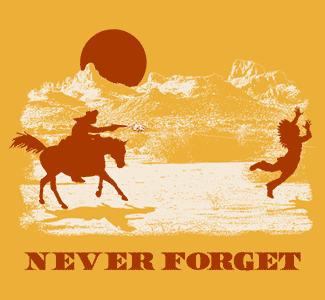
The North American Indian Holocaust
BY
KAHENTINETHA HORNThe “final solution” of the North American Indian problem was the model for the subsequent Jewish holocaust and South African apartheidWhy is the biggest holocaust in all humanity being hidden from history? Is it because it lasted so long that it has become a habit? It’s been well documented that the killing of Indigenous people in the Western Hemisphere since the beginning of colonization has been estimated at 120 million. Yet nobody wants to speak about it.Today historians, anthropologists and archaeologists are revealing that information on this holocaust is being deliberately eliminated from the knowledge base and consciousness of North Americans and the world. A completely false picture is being painted of our people as suffering from social ills of our own making.It could be argued that the loss of 120 million from 1500 to 1800 isn’t the same as the loss of 6 million people during World War II. Can 6 million in 1945 be compared to 1 million in 1500?School children are still being taught that large areas of North America are uninhabited as if this land belongs to no one and never did. The role of our ancestors as caretakers is constantly and habitually overlooked by colonial society.Before the arrival of Europeans, cities and towns here were flourishing. Mexico City had a larger population than any city in Europe. The people were healthy and well-fed. The first Europeans were amazed. The agricultural products developed by the Indigenous people transformed human nutrition internationally.The North American Indian holocaust was studied by South Africa for their apartheid program and by Hitler for his genocide of the Jews during World War II. Hitler commented that he admired the great job Americans had done in taking care of the Indian problem. The policies used to kill us off was so successful that people today generally assume that our population was low. Hitler told a past US President when he remarked about their maltreatment of the Jewish people, he mind your own business. You’re the worst.Where are the monuments? Where are the memorial ceremonies? Why is it being concealed? The survivors of the WWII holocaust have not yet died and already there is a movement afoot to forget what happened.Unlike post-war Germany, North Americans refuse to acknowledge this genocide. Almost one and a quarter million Kanien’ke:haka (Mohawk) were killed off leaving us only a few thousand survivors.North Americans do not want to reveal that there was and still is a systematic plan to destroy most of the native people by outright murder by bounty hunters and land grabbers, disease through distributing small pox infested blankets, relocation, theft of children who were placed in concentration camps called “residential schools” and assimilation.As with the Jews, they could not have accomplished this without their collaborators who they trained to serve their genocidal system through their “re-education camps”.The policy changed from outright slaughter to killing the Indian inside. Governments, army, police, church, corporations, doctors, judges and common people were complicit in this killing machine. An elaborate campaign has covered up this genocide which was engineered at the highest levels of power in the United States and Canada. This cover up continues to this day. When they killed off all the Indians, they brought in Blacks to be their labourers.In the residential schools many eye witnesses have recently come forward to describe the atrocities. They called these places “death camps” where, according to government records, nearly half of all these innocent Indigenous children died or disappeared as if they never existed. In the 1920′s when Dr. Bryce was alarmed by the high death rate of children in residential schools, his report was suppressed.The term “Final Solution” was not coined by the Nazis. It was Indian Affairs Superintendent, Duncan Campbell Scott, Canada’s Adolph Eichmann, who in April 1910 plotted out the planned murder to take care of the “Indian problem”.“It is readily acknowledged that Indian children lose their natural resistance to illness by habitating so closely in these schools, and that they die at a much higher rate than in their villages. But this alone does not justify a change in the policy of this Department, which is geared towards the final solution of our Indian Problem”. (DIA Archives, RG 10 series).In the 1930′s he brought German doctors over here to do medical experiments on our children. According to the study the majority of the lives of these children was extinguished. School children are taught his poetry with no mention of his role as the butcher of the Indian people.Those who carried out this annihilation of our people were protected so they could declare full-scale war on us. North Americans as heirs of the fruits of this murderous system have blood on their hands. If people are sincere about preventing holocausts they must remember it. History must be told as it really happened in all its tragic details.It’s not good enough to just remember the holocaust that took place during the lifetime of some of the survivors. We have to remember the larger holocaust. Isn’t it time to uncover the truth and make the perpetrators face up to this?In the west there are a whole series of Eichmanns. General Amherst ordered the distribution of small pox infested blankets to kill of our people. But his name is shamelessly preserved in the names of towns and streets. George Washington is called the “village burner” in Mohawk because of all the villages he ordered burnt. Villages would be surrounded. As the people came running out, they would be shot, stabbed, women, children and elders alike. In one campaign alone “hundreds of thousand died, from New York across Pennsylvania, West Virgina and into Ohio”. His name graces the capital of the United States.The smell of death in their own backyard does not seem to bother North Americans. This is obscene.By Kahentinetha Horn, MNN Mohawk Nation News, kahentinetha2@yahoo.com
First published in Akwesasne Phoenix, Jan. 30, 2005 issueExcerpted from Rachel’s Environment & Health Weekly newsletter, #671, “Columbus Day, 1999,” by Peter Montague (National Writers Union UAW Local 1981/AFL-CIO), with added section titles and notes where indicated.
The Beginnings of the Native Genocide
Columbus made four voyages to the New World. [1] The initial voyage reveals several important things about the man. First, he had genuine courage because few ship’s captains had ever pointed their prow toward the open ocean, the complete unknown. Secondly, from numerous of his letters and reports we learn that his overarching goal was to seize wealth that belonged to others, even his own men, by whatever means necessary.Columbus’s Spanish royal sponsors (Ferdinand and Isabella) had promised a lifetime pension to the first man who sighted land. A few hours after midnight on October 12, 1492, Juan Rodriguez Bermeo, a lookout on the Pinta, cried out — in the bright moonlight, he had spied land ahead. Most likely Bermeo was seeing the white beaches of Watling Island in the Bahamas.As they waited impatiently for dawn, Columbus let it be known that he had spotted land several hours before Bermeo. According to Columbus’s journal of that voyage, his ships were, at the time, traveling 10 miles per hour. To have spotted land several hours before Bermeo, Columbus would have had to see more than 30 miles over the horizon, a physical impossibility. Nevertheless Columbus took the lifetime pension for himself. [1,2]
- Columbus installed himself as Governor of the Caribbean islands, with headquarters on Hispaniola (the large island now shared by Haiti and the Dominican Republic). He described the people, the Arawaks (called by some the Tainos) this way:Added note:
In an ominous foreshadowing of the horrors to come, Columbus also wrote in his journal:After Columbus had surveyed the Caribbean region, he returned to Spain to prepare his invasion of the Americas. From accounts of his second voyage, we can begin to understand what the New World represented to Columbus and his men — it offered them life without limits, unbridled freedom.Columbus took the title “Admiral of the Ocean Sea” and proceeded to unleash a reign of terror unlike anything seen before or since. When he was finished, eight million Arawaks — virtually the entire native population of Hispaniola — had been exterminated by torture, murder, forced labor, starvation, disease and despair. [3, pg.x]A Spanish missionary, Bartolome de las Casas, described first-hand how the Spaniards terrorized the natives. [4] Las Casas gives numerous eye-witness accounts of repeated mass murder and routine sadistic torture.As Barry Lopez has accurately summarized it,This was not occasional violence — it was a systematic, prolonged campaign of brutality and sadism, a policy of torture, mass murder, slavery and forced labor that continued for CENTURIES.Eventually more than 100 million natives fell under European rule. Their extermination would follow. As the natives died out, they were replaced by slaves brought from Africa.To make a long story short, Columbus established a pattern that held for five centuries — a “ruthless, angry search for wealth,” as Barry Lopez describes it.Indeed, there WAS no end to it, no limit.As Hans Koning has observed,In the 1980s, under Presidents Ronald Reagan and George Bush, the U.S. government knowingly gave direct aid to genocidal campaigns that murdered tens of thousands Mayan Indian people in Guatemala, El Salvador and elsewhere. [7]The pattern holds.Added note:
And still, in 2003, the genocide continues in Colombia, El Salvador and Guatemala.Continuing the gruesome tradition of the 1980s, which also terrorized the people of Nicaragua, U.S. government-funded fascist paramilitaries mass-murder Indians in Central and South America to this day. The bestial carnage committed by Uncle Sham’s proxy armies includes countless disappearances, epidemic rape and torture. The Colombian paramilitaries have even made their own gruesome addition to the list of horrors: public beheadings.This latest stage of the American Indian holocaust is enthusiastically supported by the cocaine-smuggling CIA, the Pentagon and all the rest of the United States Corporate Mafia Government.The English/American Genocide
Unfortunately, Columbus and the Spaniards were not unique. They conquered Mexico and what is now the Southwestern U.S., with forays into Florida, the Carolinas, even into Virginia. From Virginia northward, the land had been taken by the English who, if anything, had even less tolerance for the indigenous people.As Hans Koning says,The British arrived in Jamestown in 1607. By 1610 the intentional extermination of the native population was well along. As David E. Stannard has written,In Massachusetts, Connecticut, and New Jersey extermination was officially promoted by a “scalp bounty” on dead Indians.Andrew Jackson — whose [innocent-looking] portrait appears on the U.S. $20 bill today — in 1814:The English policy of extermination — another name for genocide — grew more insistent as settlers pushed westward:In 1851 the Governor of California officially called for the extermination of the Indians in his state. [3, pg.144]On March 24, 1863, the Rocky Mountain News in Denver ran an editorial titled, “Exterminate Them.”On April 2, 1863, the Santa Fe New Mexican advocated “extermination of the Indians.” [5, pg.228]In 1867, General William Tecumseh Sherman said:In 1891, Frank L. Baum (gentle author of “The Wizard Of Oz”) wrote in the Aberdeen Saturday Pioneer (Kansas) that the army should “finish the job” by the “total annihilation” of the few remaining Indians.The U.S. did not follow through on Baum’s macabre demand, for there really was no need. By then the native population had been reduced to 2.5% of its original numbers and 97.5% of the aboriginal land base had been expropriated and renamed “The land of the free and the home of the brave.”Hundreds upon hundreds of native tribes with unique languages, learning, customs, and cultures had simply been erased from the face of the earth, most often without even the pretense of justice or law.Today we can see the remnant cultural arrogance of Christopher Columbus and Captain John Smith shadowed in the cult of the “global free market” which aims to eradicate indigenous cultures and traditions world-wide, to force all peoples to adopt the ways of the U.S.Today’s globalist “Free Trade” is merely yesterday’s “Manifest Destiny” writ large.But as Barry Lopez says,If we chose, we could set limits on ourselves for once. We could declare enough is enough.NOTES
1. J.M. Cohen, editor, The Four Voyages of Christopher Columbus
London: Penguin Books, 1969; ISBN 0-14-044217-02. Barry Lopez, The Rediscovery of North America
Lexington, Kentucky: University Press of Kentucky, 1990; ISBN 0-8131-1742-93. David E. Stannard, American Holocaust: Columbus and the Conquest of the New World
New York: Oxford University Press, 1992; ISBN 0-19-507581-14. Bartolome de las Casas, The Devastation of the Indies: A Brief Account
translated by Herma Briffault
Baltimore, Maryland: Johns Hopkins University Press, 1992; ISBN 0-8018-4430-45. Ward Churchill, A Little Matter of Genocide: Holocaust and Denial in the Americas, 1492 to the Present
San Francisco: City Lights Books, 1997; ISBN 0-87286-323-96. Hans Koning, The Conquest of America: How The Indian Nations Lost Their Continent
New York: Monthly Review Press, 1993, pg. 46.; ISBN 0-85345-876-67. For example, see Mireya Navarro, “Guatemalan Army Waged ‘Genocide,’ New Report Finds,”
NEW YORK TIMES, February 26, 1999, pg. unknown.
The NY Times described “torture, kidnapping and execution of thousands of civilians” — most of them Mayan Indians — a campaign to which the U.S. government contributed “money and training.”The following narrative is by Arthur Barlowe (1584, p.108), describing American Indians. General Philip H. Sheridan was the commander of the United States forces [...] he had plans of exterminating the buffalo. He thought this would kill the Plains Indians. “Kill the buffalo and you kill the Indians” he said.David Stannard in his scholarly American Holocaust (1992, p. 232) writes:Among the contemporary Holocaust deniers is also Gary North, who in his Political Polytheism (1989, pp. 257-258) asserts:The European colonization of the Americas forever changed the lives and cultures of the Native Americans. In the 15th to 19th centuries, their populations were ravaged, by the privations of displacement, by disease, and in many cases by warfare with European groups and enslavement by them. The first Native American group encountered by Columbus, the 250,000 Arawaks of Haiti, were enslaved. Only 500 survived by the year 1550, and the group was extinct before 1650.Europeans also brought diseases against which the Native Americans had no immunity. Chicken pox and measles, though common and rarely fatal among Europeans, often proved fatal to Native Americans, and more dangerous diseases such as smallpox were especially deadly to Native American populations. It is difficult to estimate the total percentage of the Native American population killed by these diseases.Epidemics often immediately followed European exploration, sometimes destroying entire villages. Some historians estimate that up to 80% of some Native populations may have died due to European diseases.
General Philip H. Sheridan was the commander of the United States forces [...] he had plans of exterminating the buffalo. He thought this would kill the Plains Indians. “Kill the buffalo and you kill the Indians” he said.David Stannard in his scholarly American Holocaust (1992, p. 232) writes:Among the contemporary Holocaust deniers is also Gary North, who in his Political Polytheism (1989, pp. 257-258) asserts:The European colonization of the Americas forever changed the lives and cultures of the Native Americans. In the 15th to 19th centuries, their populations were ravaged, by the privations of displacement, by disease, and in many cases by warfare with European groups and enslavement by them. The first Native American group encountered by Columbus, the 250,000 Arawaks of Haiti, were enslaved. Only 500 survived by the year 1550, and the group was extinct before 1650.Europeans also brought diseases against which the Native Americans had no immunity. Chicken pox and measles, though common and rarely fatal among Europeans, often proved fatal to Native Americans, and more dangerous diseases such as smallpox were especially deadly to Native American populations. It is difficult to estimate the total percentage of the Native American population killed by these diseases.Epidemics often immediately followed European exploration, sometimes destroying entire villages. Some historians estimate that up to 80% of some Native populations may have died due to European diseases.
WOUNDED KNEE MASSACRE
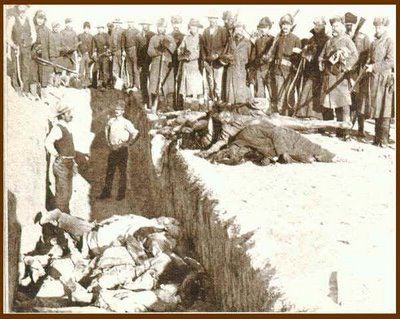
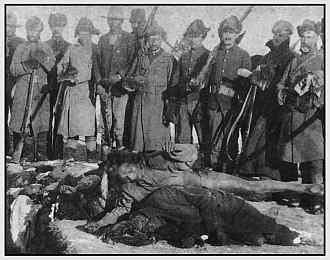
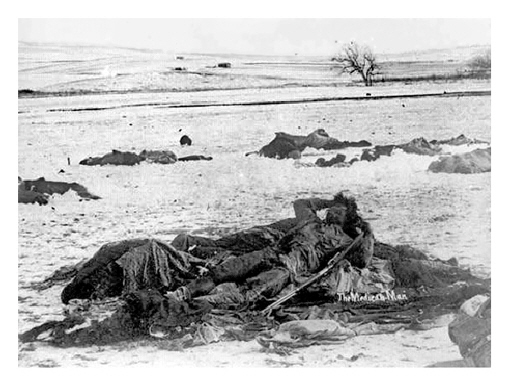
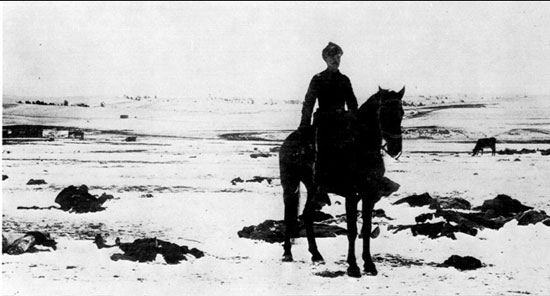 On March 27, 1973, a young woman took the stage at the Dorothy Chandler Pavilion in Los Angeles, California, to decline Marlon Brando’s Best Actor Oscar. She said that Marlon Brando cannot accept this award because of the treatment of American Indians by the film industry and the recent happenings at Wounded Knee.Brando had written a fifteen-page speech to be given at the awards by Cruz, but when the producer met her backstage, he threatened to physically remove her or have her arrested if she spoke on stage for more than 45 seconds. The speech she read contained the lines:In his autobiography Songs my Mother Told Me (1994, pp. 380-402) Marlon Brando, devotes several pages to the genocide of the American Indians, excerpted as follows:
On March 27, 1973, a young woman took the stage at the Dorothy Chandler Pavilion in Los Angeles, California, to decline Marlon Brando’s Best Actor Oscar. She said that Marlon Brando cannot accept this award because of the treatment of American Indians by the film industry and the recent happenings at Wounded Knee.Brando had written a fifteen-page speech to be given at the awards by Cruz, but when the producer met her backstage, he threatened to physically remove her or have her arrested if she spoke on stage for more than 45 seconds. The speech she read contained the lines:In his autobiography Songs my Mother Told Me (1994, pp. 380-402) Marlon Brando, devotes several pages to the genocide of the American Indians, excerpted as follows:Alcohol-Attributable Deaths and Years of Potential Life Lost Among American Indians and Alaska Natives — United States, 2001–2005
Excessive alcohol consumption is a leading preventable cause of death in the United States (1) and has substantial public health impact on American Indian and Alaska Native (AI/AN) populations (2). To estimate the average annual number of alcohol-attributable deaths (AADs) and years of potential life lost (YPLLs) among AI/ANs in the United States, CDC analyzed 2001–2005 data (the most recent data available), using death certificate data and CDC Alcohol-Related Disease Impact (ARDI) software.* This report summarizes the results of that analysis, which indicated that AADs accounted for 11.7% of all AI/AN deaths, that the age-adjusted AAD rate for AI/ANs was approximately twice that of the U.S. general population, and that AI/ANs lose 6.4 more years of potential life per AAD compared with persons in the U.S. general population (36.3 versus 29.9 years). These findings underscore the importance of implementing effective population-based interventions to prevent excessive alcohol consumption and to reduce alcohol-attributable morbidity and mortality among AI/ANs.ARDI estimates AADs and YPLLs resulting from excessive alcohol consumption by using multiple data sources and methods.† AADs are generated by multiplying the number of sex- and cause-specific deaths (e.g., liver cancer) by the sex- and cause-specific alcohol-attributable fraction (AAF) (i.e., the proportion of deaths attributable to excessive alcohol consumption). For deaths that are, by definition, 100% attributable to excessive alcohol consumption (e.g., alcoholic liver disease), the total number of AADs equals the total number of deaths. For deaths that are <100 0.10="" a="" aads.="" aaf="" above="" alcohol-related="" alcohol="" and="" ardi="" are="" assessed="" at="" attributable="" based="" between="" blood="" calculated="" cancer="" chronic="" come="" concentration="" condition="" conditions="" consumption="" decedents="" direct="" dl="" dying="" e.g.="" either="" estimates="" examining="" follow-up="" from="" g="" generate="" have="" health="" high="" i.e.="" indirect="" injuries="" interviews="" levels="" liver="" low="" medical="" medium="" meta-analyses="" mostly="" next-of-kin.="" number="" obtained="" of="" on="" or="" outcomes="" p="" particular="" persons="" pooled="" population-based="" prevalence="" proportion="" record="" relationship="" review="" risk="" specified="" studies="" that="" the="" to="" total="" typically="" use="" uses="" various="" with="">For this analysis, death certificate data for 2001–2005 were used to determine the average annual number of deaths from alcohol-related causes for all AI/ANs in the United States and for the U.S. population as a whole. Population-specific, direct AAF estimates for motor vehicle traffic crashes were obtained from the Fatality Analysis and Reporting System§ by averaging 2001–2005 data for AI/ANs and the U.S. population. Population-based prevalence estimates of alcohol consumption were obtained by averaging 2001–2005 data from the Behavioral Risk Factor Surveillance System¶ and were used to calculate all indirect AAFs. AADs were analyzed by cause and stratified by sex and by age, using standard 5-year age groupings. YPLLs were generated by multiplying the age- and sex-specific AADs by the corresponding life expectancies. Death and life expectancy data were obtained from the National Vital Statistics System.** Death records missing data on decedent age or sex were excluded from this analysis. Bridged-race population estimates from the U.S. Census were used to calculate death rates. Death rates were directly age adjusted to the standard 2000 U.S. population using the age groups 0–19, 20–34, 35–49, 50–64, and >65 years.During 2001–2005, an average of 1,514 AADs occurred annually among AI/ANs, accounting for 11.7% of all deaths in this population (Table). Overall, 771 (50.9%) of average annual AADs resulted from acute causes, and 743 (49.1%) from chronic causes. The leading acute cause of death was motor-vehicle traffic crashes (417 AADs), and the leading chronic cause was alcoholic liver disease (381). The crude AAD rate among AI/ANs was 49.1 per 100,000 population (25.0 for acute causes and 24.1 for chronic causes). Of all YPLLs, 60.3% resulted from acute conditions, and 39.7% resulted from chronic conditions. The leading acute cause of YPLLs was motor-vehicle traffic crashes (34.4% of YPLLs), and the leading chronic cause was alcoholic liver disease (21.2%).Overall, 68.3% of AAD decedents among AI/ANs were men, and more AADs occurred among men than women in all age groups (Figure 1); 65.9% of AADs were among persons aged <50 20="" 6.9="" 68.3="" aged="" among="" and="" of="" p="" persons="" the="" those="" were="" years.="" years="" yplls="">By Indian Health Service statistical region, the greatest number of AADs occurred in the Northern Plains (497 AADs), South West (315), and Pacific Coast (230) regions, and the fewest AADs occurred in Alaska (86) (Figure 2). Age-adjusted AAD rates were highest in the Northern Plains (95.2; 95% confidence interval [CI] = 86.5–103.9), Alaska (92.6; CI = 72.4–112.8), and the South West (80.2; CI = 70.8–89.6), and were approximately four to five times higher than the rate in the East (19.2; CI = 15.8–22.6).Age-adjusted AAD rates and the relative contributions of AADs to total deaths and total YPLLs were substantially higher for AI/ANs compared with the U.S. general population. The age-adjusted AAD rate per 100,000 for AI/ANs was 55.0 (CI = 52.1–57.9) versus 26.9 (CI = 26.7–27.1) for the U.S. general population. Furthermore, AADs accounted for 11.7% of total deaths among AI/AN versus 3.3% for the U.S. general population, and alcohol-attributable YPLLs accounted for 17.3% of total YPLLs for AI/ANs and 6.3% of total YPLLs for the U.S. general population. The average number of YPLLs per AAD also was higher for AI/ANs compared with the U.S. general population (36.3 years versus 29.9 years, respectively).Reported by: TS Naimi, MD, Zuni Public Health Svc Hospital; N Cobb, MD, Div of Epidemiology; D Boyd, MDCM, National Trauma Systems, Indian Health Svc. DW Jarman, DVM, Preventive Medicine Residency and Fellowship Program; R Brewer, MD, DE Nelson, MD, J Holt, PhD, Div of Adult and Community Health, National Center for Chronic Disease Prevention and Health Promotion; D Espey, MD, Div of Cancer Prevention and Control, National Center for Chronic Disease Prevention and Health Promotion; P Snesrud, Office of Minority Health and Health Disparities; P Chavez, PhD, EIS Officer, CDC.Editorial Note:This is the first national report of AADs and YPLLs among AI/ANs; the results demonstrate that excessive alcohol consumption is a leading cause of preventable death and years of lost life in this population. During 2001–2005, AI/ANs were more than twice as likely to die from alcohol-related causes, compared with the U.S. general population; 11.7% of AI/AN deaths were attributed to alcohol. These findings are consistent with those of previous studies (4,5) and might help account for the high rates of injury-related death (e.g., motor-vehicle traffic crashes) that have been observed in this population. The finding that AAD rates vary by region demonstrates that alcohol does not impact all AI/AN communities to the same extent. AI/ANs in specific regions (e.g., Northern Plains) have lower life expectancies; this is likely attributable, in part, to deaths from alcohol-attributable conditions (6).To further address alcohol-attributable mortality among AI/ANs will require concerted action by multiple organizations and groups, including AI/AN communities, towns on nonreservation lands within and surrounding AI/AN communities, and national, state, and local health agencies. Bans on the sale and possession of alcoholic beverages on certain Indian reservations have been shown to reduce consumption and related harms (5), although the efficacy of such policies is influenced by access to alcohol in surrounding communities (7). Culturally appropriate clinical interventions for reducing excessive drinking (e.g., screening and counseling for excessive alcohol consumption and treatment for alcohol dependence) should be widely implemented among AI/ANs (7). In addition, tribal court systems, which deal with large numbers of alcohol-related crimes, should be better integrated with the health-care system and substance-abuse treatment programs.The findings in this report are subject to at least four limitations. First, some AI/ANs might have been misclassified by race on death certificates, which would underestimate the total number of AI/AN deaths (8). In a 1996 Indian Health Service study, racial misclassification on death certificates of American Indians ranged from 1.2% in Arizona to 28.0% in Oklahoma and 30.4% in California (8). Second, this study did not use race-specific AAFs for most conditions, which might result in AAD underestimates for certain conditions (e.g., homicide and suicide) for which the AAFs are thought to be higher among AI/ANs (4). Third, ARDI does not estimate AADs for several conditions (e.g., tuberculosis, pneumonia, hepatitis C, and colon cancer) for which alcohol is believed to be an important risk factor but for which suitable pooled risk estimates are not available. Finally, bridged-race census estimates used in this report are based on multiple race categories; use of denominators based on other race categorization methods (e.g., 2000 U.S. Census data or tribal census data) would result in higher rates than reported.Indian Health Service has initiated an alcohol screening and brief counseling intervention program to help reduce excessive alcohol consumption and related harms among AI/ANs in trauma settings. In addition, effective population-based interventions should be implemented to reduce excessive alcohol consumption in AI/AN populations. These include reducing alcohol availability by limiting outlet density, enforcing 21 years as the minimum legal drinking age (9), increasing alcohol excise taxes, and enforcing laws prohibiting sales to underage or already intoxicated persons, particularly in communities bordering reservations (10). Future efforts should explore regional differences in AADs and evaluate other intervention strategies for reducing alcohol-attributable mortality among AI/AN populations.AcknowledgmentsThis report is based, in part, on data contributed by T Lindsey, National Center for Statistics and Analysis, National Highway Traffic Safety Admin, US Dept of Transportation; M Zack, Div of Adult and Community Health, National Center for Chronic Disease and Public Health Promotion; and C Rothwell and D Hoyert, National Center for Health Statistics, CDC.References1) Mokdad AH, Marks JS, Stroup DF, Gerberding JL. Actual causes of death in the United States, 2000. JAMA 2004;291:1238–45.2) May AP. The epidemiology of alcohol abuse among American Indians: the mythical and real properties. The IHS Primary Care Provider 1995;20:37–56.3) Smith GS, Branas CC, Miller TR. Fatal nontraffic injuries involving alcohol: a metaanalysis. Ann Emerg Med 1999;33:659–68.4) May PA, Van Winkle NW, Williams MB, McFeeley PJ, DeBruyn LM, Serna P. Alcohol and suicide death among American Indians of New Mexico: 1980–1998. Suicide Life Threat Behav 2002;32:240–55.5) Landen MG, Beller M, Funk E, Propst M, Middaugh J, Moolenaar RL. Alcohol-related injury death and alcohol availability in remote Alaska. JAMA 1997;278:1755–8.6) Murray CJ, Kulkarni SC, Michaud C, et al. Eight Americas: investigating mortality disparities across races, counties, and race-counties in the United States. PLoS Med 2006;3:e260.7) Guthrie P. Gallup, New Mexico: on the road to recovery. In: Streicker J, ed. Case histories in alcohol policy. San Francisco, CA: Trauma Foundation; 2000.8) Indian Health Service. Adjusting for miscoding of Indian race on state death certificates. Rockville, MD: US Department of Health and Human Services, Public Health Service, Indian Health Service; 1996.9) Task Force on Community Preventive Services. Excessive alcohol consumption. Atlanta, GA: US Department of Health and Human Services, CDC. Available at http://www.thecommunityguide.org/alcohol/default.htm.10) Babor T, Caetano R, Casswell S, et al. Alcohol: no ordinary commodity. A summary of the book. Addiction 2003;98:1343–50.* Available at http://apps.nccd.cdc.gov/ardi.† Available at http://apps.nccd.cdc.gov/ardi/aboutardimethods.htm#aafs.§ Available at http://www-fars.nhtsa.dot.gov/main/index.aspx.¶ Available at http://www.cdc.gov/brfss/index.htm.** Available at http://www.cdc.gov/nchs/nvss.htm.Figure 1Figure 2TableNative Resistance Chronology
 Top left to bottom right: Crazy Horse, Emiliano Zapata, Geronimo, Chief Pontiac, Tecumseh, Túpac Amaru, Enriquillo, Chief Joseph, Túpac Amaru II, Quanah Parker, Cuauhtémoc, Sitting Bull“One does not sell the earth upon which the people walk.” – Tashunka Witko (Crazy Horse)
Top left to bottom right: Crazy Horse, Emiliano Zapata, Geronimo, Chief Pontiac, Tecumseh, Túpac Amaru, Enriquillo, Chief Joseph, Túpac Amaru II, Quanah Parker, Cuauhtémoc, Sitting Bull“One does not sell the earth upon which the people walk.” – Tashunka Witko (Crazy Horse)






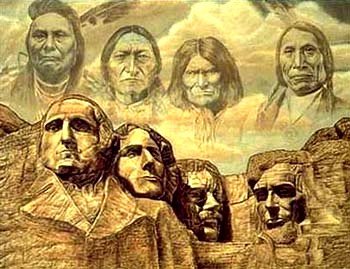
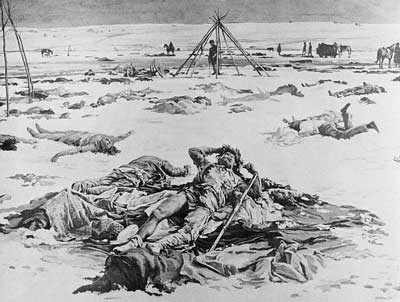
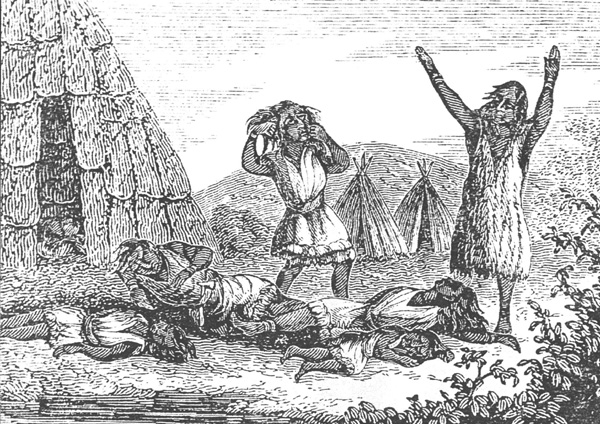
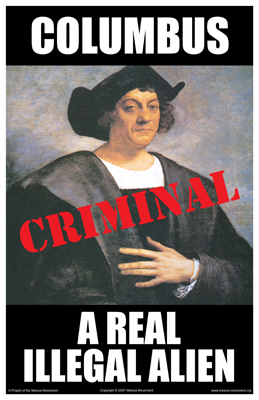
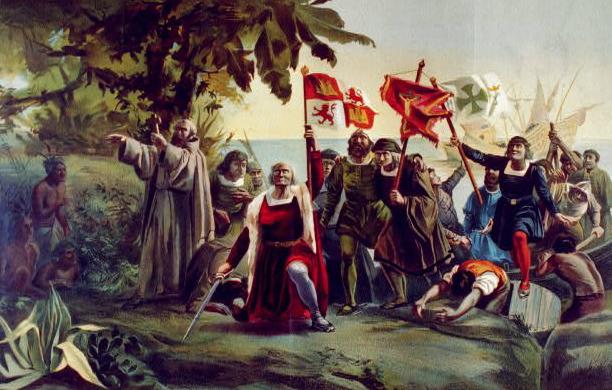
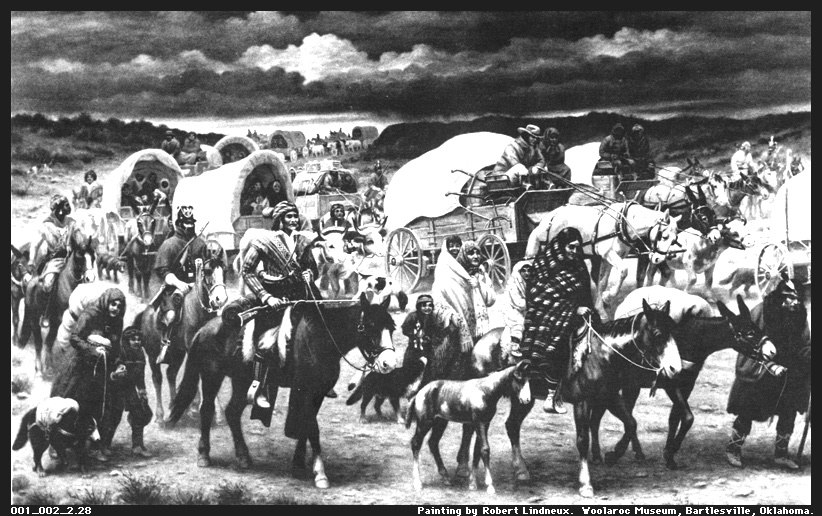
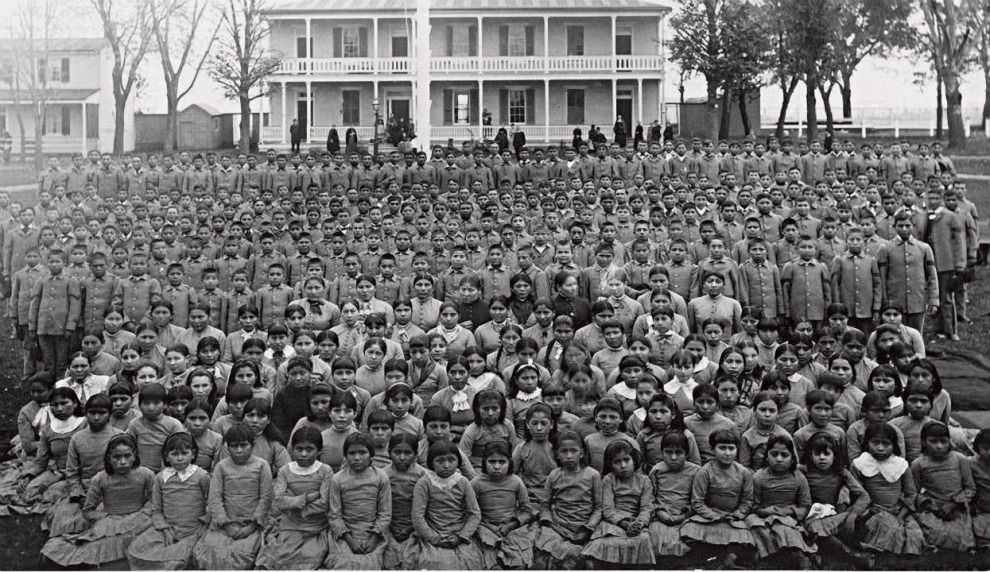

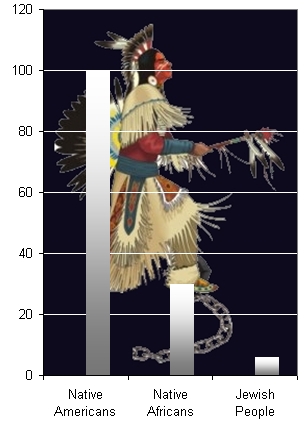
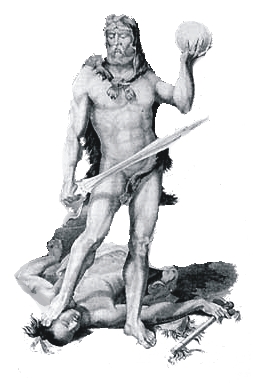
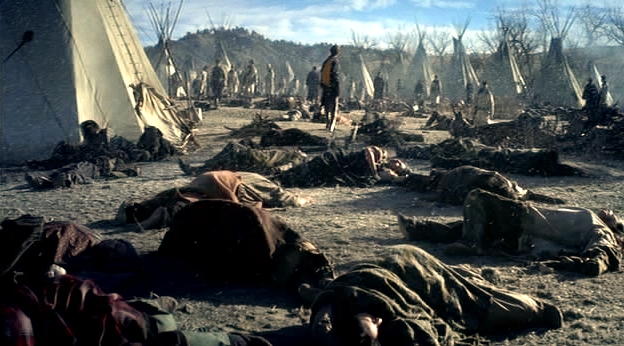
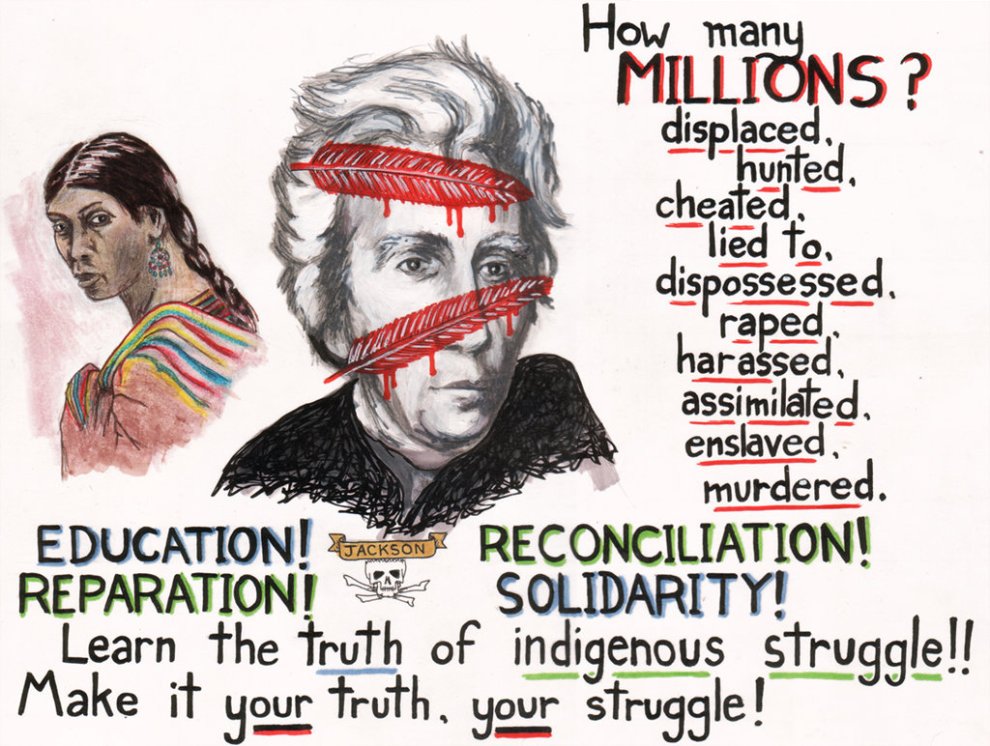

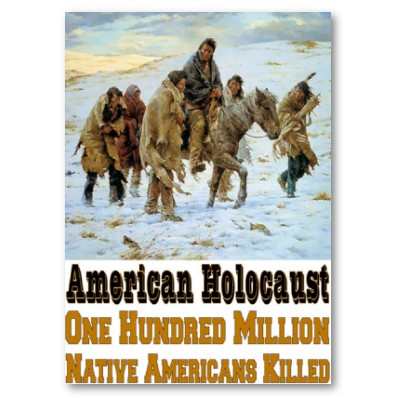
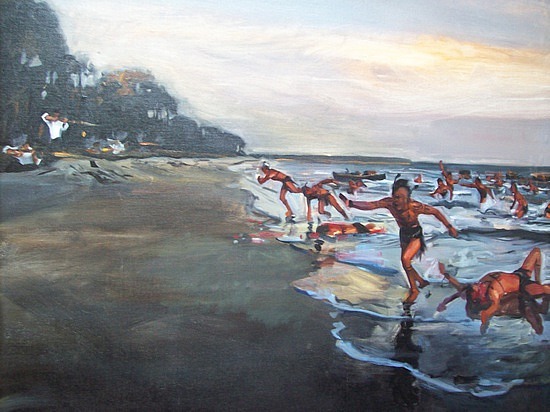
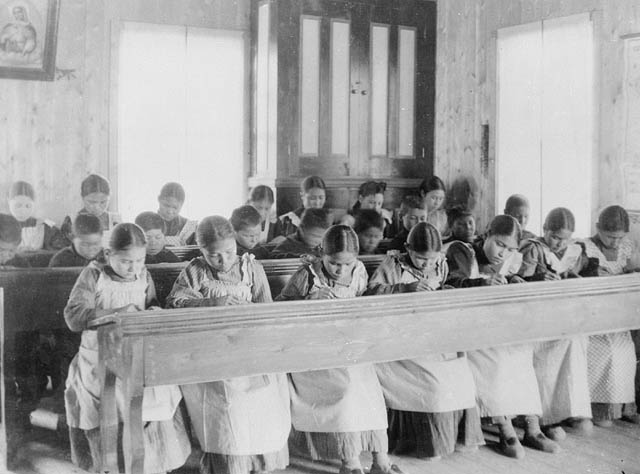
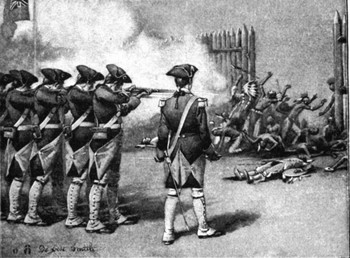
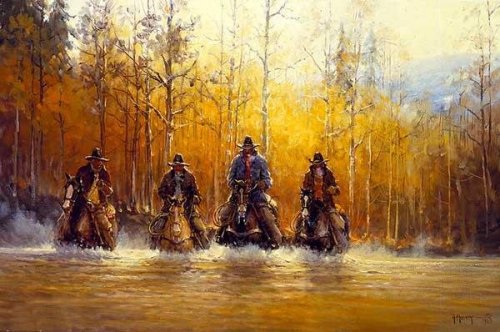

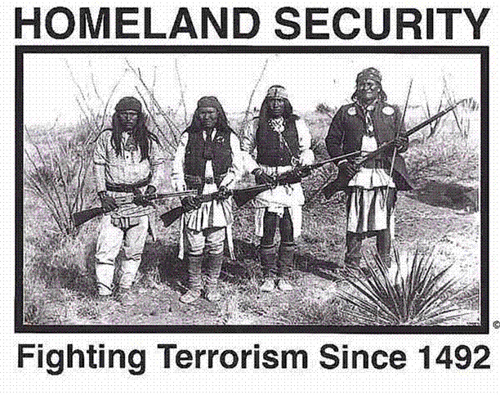
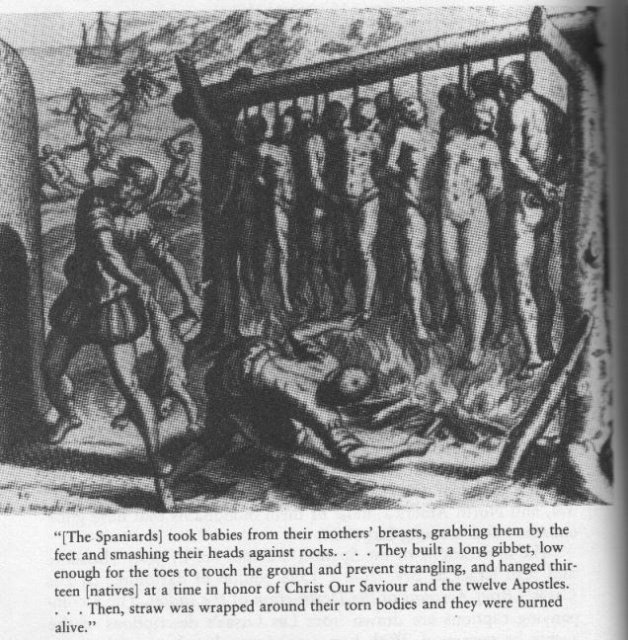
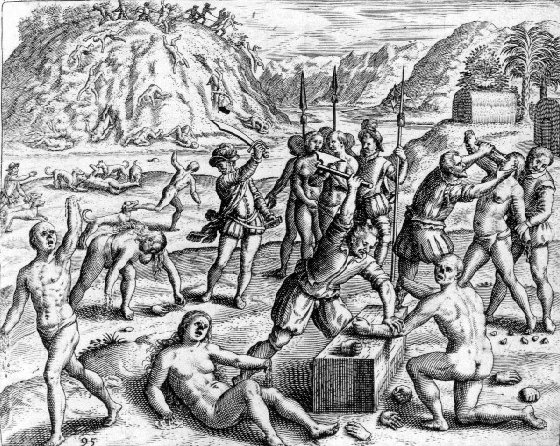

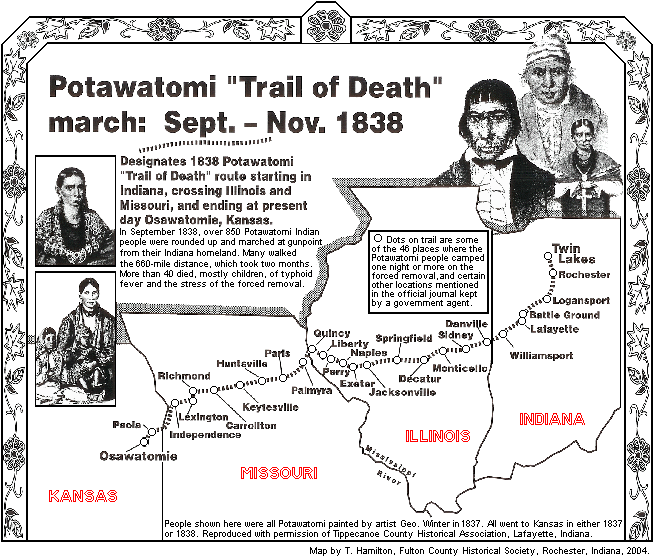
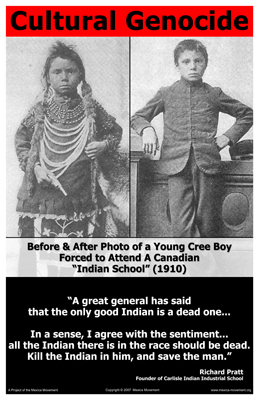
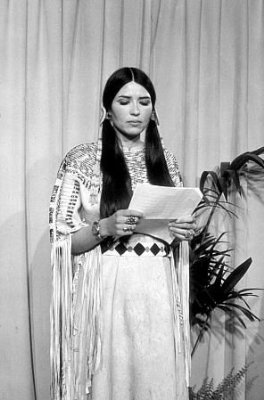
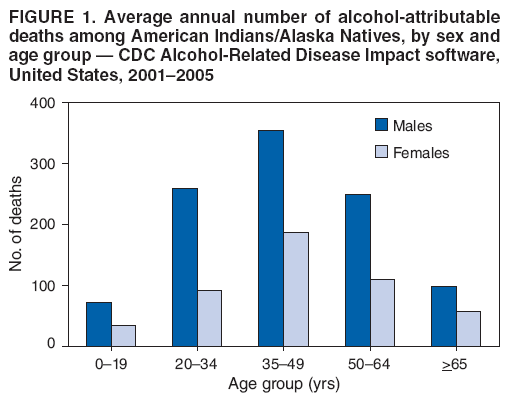


No comments:
Post a Comment